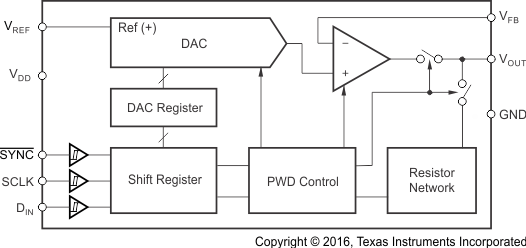-
DACx551-Q1 Automotive 16-, 12-Bit, Ultralow-Glitch, Voltage-Output DAC SLASEB8C February 2016 – November 2016 DAC6551-Q1 , DAC8551-Q1
PRODUCTION DATA.
-
DACx551-Q1 Automotive 16-, 12-Bit, Ultralow-Glitch, Voltage-Output DAC
- 1 Features
- 2 Applications
- 3 Description
- 4 Revision History
- 5 Pin Configuration and Functions
- 6 Specifications
- 7 Detailed Description
- 8 Application and Implementation
- 9 Power Supply Recommendations
- 10Layout
- 11Device and Documentation Support
- 12Mechanical, Packaging, and Orderable Information
- IMPORTANT NOTICE
Package Options
Mechanical Data (Package|Pins)
- DGK|8
Thermal pad, mechanical data (Package|Pins)
Orderable Information
DACx551-Q1 Automotive 16-, 12-Bit, Ultralow-Glitch, Voltage-Output DAC
1 Features
- Qualified for Automotive Applications
- AEC-Q100 Qualified With the Following Results:
- Device Temperature Grade 1: –40°C to 125°C Ambient Operating Temperature Range
- Device HBM ESD Classification Level 2
- Device CDM ESD Classification Level C4B
- Relative Accuracy:
- DAC8551-Q1 (16-Bit): 4 LSB INL
- DAC6551-Q1 (12-Bit): 0.3 LSB INL
- Ultralow Glitch Impulse: 0.1 nV-s
- Settling Time: 8 μs to ±0.003% FSR
- Power Supply: 3 V to 5.5 V
- Power-On Reset to Zero Scale
- MicroPower Operation: 160 μA at 5 V
- Low-Power Serial Interface With Schmitt-Triggered Inputs
- On-Chip Output Buffer Amplifier With Rail-to-Rail Operation
- Power-Down Capability
- Binary Input
- SYNC Interrupt Facility
- Available in a Tiny VSSOP-8 Package
2 Applications
- Automotive Radar
- Automotive Sensors
3 Description
The DAC8551-Q1 and DAC6551-Q1 are small, low-power, voltage-output, 16- and 12-bit digital-to-analog converters (DACs) qualified for automotive applications. The DACx551-Q1 devices provide good linearity and minimize undesired code-to-code transient voltages. The devices use a versatile 3-wire serial interface that operates at clock rates to 30 MHz and is compatible with standard SPI, QSPI, Microwire, and digital signal-processor (DSP) interfaces.
The DACx551-Q1 devices require an external reference voltage to set the output range. The devices incorporate a power-on-reset circuit that ensures the DAC output powers up at 0 V and remains there until a valid write to the device takes place. The devices contain a power-down feature, accessed over the serial interface, that reduces the current consumption to 800 nA at 5 V.
The DACx551-Q1 devices power consumption is only 800 µW at 5 V, reducing to less than 4 μW in power-down mode. The DACx551-Q1 devices are available in a VSSOP-8 package.
Device Information(1)
| PART NUMBER | PACKAGE | BODY SIZE (NOM) |
|---|---|---|
| DAC8551-Q1 DAC6551-Q1 |
VSSOP (8) | 3.00 mm × 3.00 mm |
- For all available packages, see the orderable addendum at the end of the data sheet.
4 Revision History
Changes from B Revision (November 2016) to C Revision
- Added device DAC6551-Q1 to the data sheetGo
- Changed the data sheet Title From: DAC8551-Q1 Automotive 16-Bit... To: DACx551-Q1 Automotive 16-, 12-Bit...Go
- Changed Relative Accuracy in the Features section Go
- Updated the Description to include the DAC6551-Q1 device Go
- Added DAC6551-Q1 to the Thermal Table Go
- Added separate lines for the DAC6551-Q1 and DAC8551-Q1 devices for Resolution, Relative accuracy, and Differential nonlinearity in the Electrical Characteristics tableGo
- Changed Note 1 of the Electrical Characteristics tableGo
- Updated the Overview section to include the DAC6551-Q1 device Go
- Changed Equation 1Go
- Changed the definitions of in the "where:" statement for Equation 1Go
- Deleted a sentence from the Resistor String section: "Monotonicity is ennsured because of the string resistor archietecture."Go
- Added Figure 31 Go
- Updated the Application Information section to include the DAC6551-Q1 device Go
- Updated the Using the REF02 As a Power Supply for the DACx551-Q1 Device section to include the DAC6551-Q1 device Go
- Updated the System Examples section to include the DAC6551-Q1 device Go
- Updated the Power Supply Recommendations section to include the DAC6551-Q1 device Go
- Updated the Layout Guidelines section to include the DAC6551-Q1 device Go
Changes from A Revision (March 2016) to B Revision
- Changed Relative Accuracy in the Features section Go
- Changed power supply voltage in the Features section Go
- Changed voltage for VDD in the Pin Functions table Go
- Changed supply voltage in the Recommended Operating Conditions table Go
- Changed values in the Thermal Information tableGo
- Changed supply voltage in the conditions statement of the Electrical Characteristics table Go
- Removed two rows and all test conditions in the LOGIC INPUTS section of the Electrical Characteristics tableGo
- Changed supply voltage in the POWER REQUIREMENTS section of the Electrical Characteristics table Go
- Changed test conditions for supply current in the POWER REQUIREMENTS section of the Electrical Characteristics table Go
- Changed VDD in the condition statement and test conditions of the Timing Requirements sectionGo
- Changed MIN value for SCLK low time in the Timing Requirements section Go
- Added text in the Application Information sectionGo
- Changed supply voltage in the Power Supply Recommendations sectionGo
- Added new Receiving Notification of Documentation Updates sectionGo
Changes from * Revision (February 2016) to A Revision
- Changed data sheet from PRODUCT PREVIEW to PRODUCTON DATA Go
5 Pin Configuration and Functions
Pin Functions
6 Specifications
6.1 Absolute Maximum Ratings
over operating ambient temperature range (unless otherwise noted)(1)| MIN | MAX | UNIT | ||
|---|---|---|---|---|
| VDD to GND | –0.3 | 6 | V | |
| Digital input voltage to GND | DIN, SCLK and SYNC | –0.3 | VDD + 0.3 | V |
| VOUT to GND | –0.3 | VDD + 0.3 | V | |
| VREF to GND | –0.3 | VDD + 0.3 | V | |
| VFB to GND | –0.3 | VDD + 0.3 | V | |
| Junction temperature range, TJ max | –65 | 150 | °C | |
| Storage temperature, Tstg | –65 | 150 | °C | |
6.2 ESD Ratings
| VALUE | UNIT | ||||
|---|---|---|---|---|---|
| V(ESD) | Electrostatic discharge | Human-body model (HBM), per AEC Q100-002(1) | ±2000 | V | |
| Charged-device model (CDM), per AEC Q100-011 | All pins | ±500 | |||
| Corner pins (1, 4, 5, and 8) | ±750 | ||||
6.3 Recommended Operating Conditions
over operating ambient temperature range (unless otherwise noted)6.4 Thermal Information
| THERMAL METRIC(1) | DAC8551-Q1 DAC6551-Q1 |
UNIT | |
|---|---|---|---|
| DGK (VSSOP) | |||
| 8 PINS | |||
| RθJA | Junction-to-ambient thermal resistance | 173.7 | °C/W |
| RθJC(top) | Junction-to-case (top) thermal resistance | 65.4 | °C/W |
| RθJB | Junction-to-board thermal resistance | 94.2 | °C/W |
| ψJT | Junction-to-top characterization parameter | 10.2 | °C/W |
| ψJB | Junction-to-board characterization parameter | 92.7 | °C/W |
6.5 Electrical Characteristics
VDD = 3 V to 5.5 V, VREF = VDD and TA = –40°C to 125°C, unless otherwise noted.| PARAMETER | TEST CONDITIONS | MIN | TYP | MAX | UNIT | ||
|---|---|---|---|---|---|---|---|
| STATIC PERFORMANCE(1) | |||||||
| Resolution | DAC8551-Q1 | 16 | Bits | ||||
| DAC6551-Q1 | 12 | ||||||
| Relative accuracy | DAC8551-Q1 | ±4 | ±16 | LSB | |||
| DAC6551-Q1 | ±0.3 | ±1 | |||||
| Differential nonlinearity | DAC8551-Q1 | ±0.35 | ±2 | LSB | |||
| DAC6551-Q1 | ±0.02 | ±1 | |||||
| Offset error | ±1 | ±15 | mV | ||||
| Full-scale error | ±0.05 | ±0.5 | % of FSR | ||||
| Gain error | ±0.02 | ±0.2 | % of FSR | ||||
| Offset error drift | ±5 | μV/°C | |||||
| Gain temperature coefficient | ±1 | ppm of FSR/°C | |||||
| PSRR | Power-supply rejection ratio | RL = 2 kΩ, CL = 200 pF | 0.75 | mV/V | |||
| OUTPUT CHARACTERISTICS(2) | |||||||
| Output voltage range | 0 | VREF | V | ||||
| Output voltage settling time | To ±0.003% FSR, 0200h to FD00h RL = 2 kΩ, 0 pF < CL < 200 pF |
8 | μs | ||||
| Slew rate | 1.4 | V/μs | |||||
| Capacitive load stability | RL = ∞ | 470 | pF | ||||
| RL = 2 kΩ | 1000 | pF | |||||
| Code change glitch impulse | 1 LSB change around major carry | 0.1 | nV-s | ||||
| Digital feedthrough | 50 kΩ series resistance on digital lines | 0.1 | nV-s | ||||
| DC output impedance | At mid-code input | 1 | Ω | ||||
| Short-circuit current | VDD = 3 V to 5.5 V | 35 | mA | ||||
| AC PERFORMANCE | |||||||
| SNR | Signal-to-noise ratio | BW = 20 kHz, VDD = 5 V, VREF = 4.5 V, fOUT = 1 kHz First 19 harmonics removed for SNR calculation |
84 | dB | |||
| THD | Total harmonic distortion | –80 | dB | ||||
| SFDR | Spurious-free dynamic range | 84 | dB | ||||
| SINAD | Signal to noise and distortion | 76 | dB | ||||
| REFERENCE INPUT | |||||||
| Reference current | VREF = VDD = 5.5 V | 50 | μA | ||||
| VREF = VDD = 3.6 V | 25 | ||||||
| Reference input range | 0 | VDD | V | ||||
| Reference input impedance | 125 | kΩ | |||||
| LOGIC INPUTS(2) | |||||||
| Input current | ±1 | μA | |||||
| VINL | Input low voltage | 0.3×VDD | V | ||||
| VINH | Input high voltage | 0.7×VDD | V | ||||
| Pin capacitance | 3 | pF | |||||
| POWER REQUIREMENTS | |||||||
| VDD | Supply voltage | 3 | 5.5 | V | |||
| IDD | Supply current | Normal mode, midscale code, no load, does not include reference current. VIH = VDD and VIL = GND, VDD = 3.6 V to 5.5 V |
160 | 250 | μA | ||
| Normal mode, midscale code, no load, does not include reference current. VIH = VDD and VIL = GND, VDD = 3 V to 3.6 V |
110 | 240 | |||||
| All power-down modes, VIH = VDD and VIL = GND, VDD = 3.6 V to 5.5 V |
0.8 | 3 | |||||
| All power-down modes, VIH = VDD and VIL = GND, VDD = 3 V to 3.6 V |
0.5 | 3 | |||||
| POWER EFFICIENCY | |||||||
| IOUT / IDD | ILOAD = 2 mA, VDD = 5 V | 89% | |||||
| TEMPERATURE RANGE | |||||||
| TA | Ambient temperature | –40 | 125 | °C | |||
6.6 Timing Requirements(1)(2)
VDD = 3 V to 5.5 V and TA = –40°C to 125°C, unless otherwise noted.6.7 Switching Characteristics
over operating ambient temperature range (unless otherwise noted)| PARAMETER | TEST CONDITIONS | MIN | TYP | MAX | UNIT | |
|---|---|---|---|---|---|---|
| Power-up time | Coming out of power-down mode, VDD = 5 V | 2.5 | µs | |||
| Coming out of power-down mode, VDD = 3.3 V | 5 | |||||
 Figure 1. Serial-Write-Operation Timing Diagram
Figure 1. Serial-Write-Operation Timing Diagram
6.8 Typical Characteristics
At TA = 25°C, VDD = 5 V unless otherwise noted.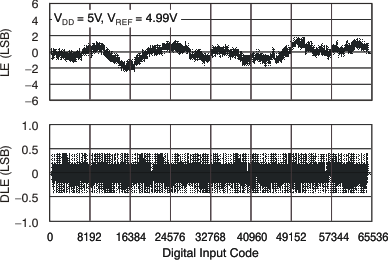 Figure 2. Linearity Error and Differential Linearity Error vs Digital Input Code (–40°C)
Figure 2. Linearity Error and Differential Linearity Error vs Digital Input Code (–40°C)
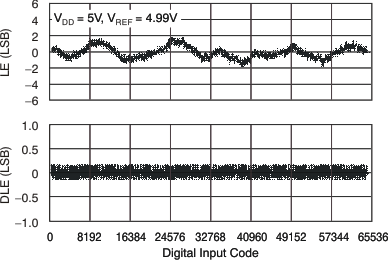 Figure 4. Linearity Error and Differential Linearity Error vs Digital Input Code (125°C)
Figure 4. Linearity Error and Differential Linearity Error vs Digital Input Code (125°C)
 Figure 6. Full-Scale Error vs Temperature
Figure 6. Full-Scale Error vs Temperature
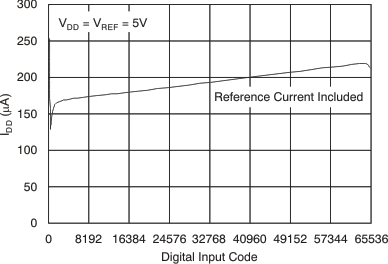 Figure 8. Supply Current vs Digital Input Code
Figure 8. Supply Current vs Digital Input Code
 Figure 10. Supply Current vs Supply Voltage
Figure 10. Supply Current vs Supply Voltage
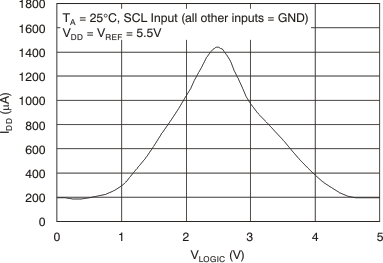 Figure 12. Supply Current vs Logic Input Voltage
Figure 12. Supply Current vs Logic Input Voltage
 Figure 14. Full-Scale Settling Time: 5-V Falling Edge
Figure 14. Full-Scale Settling Time: 5-V Falling Edge
 Figure 16. Half-Scale Settling Time: 5-V Falling Edge
Figure 16. Half-Scale Settling Time: 5-V Falling Edge
 Figure 18. Glitch Impulse: 5 V, 1-LSB Step, Falling Edge
Figure 18. Glitch Impulse: 5 V, 1-LSB Step, Falling Edge
 Figure 20. Glitch Impulse: 5 V, 16-LSB Step, Falling Edge
Figure 20. Glitch Impulse: 5 V, 16-LSB Step, Falling Edge
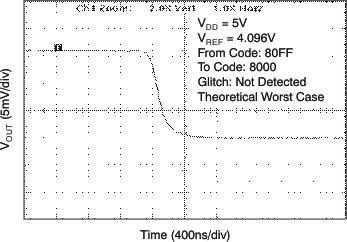 Figure 22. Glitch Impulse: 5 V, 256-LSB Step, Falling Edge
Figure 22. Glitch Impulse: 5 V, 256-LSB Step, Falling Edge
 Figure 24. Signal-to-Noise Ratio vs Output Frequency
Figure 24. Signal-to-Noise Ratio vs Output Frequency
 Figure 26. Output Noise Density
Figure 26. Output Noise Density
 Figure 3. Linearity Error and Differential Linearity Error vs Digital Input Code (25°C)
Figure 3. Linearity Error and Differential Linearity Error vs Digital Input Code (25°C)
 Figure 5. Offset Error vs Temperature
Figure 5. Offset Error vs Temperature
 Figure 7. Source and Sink Current Capability
Figure 7. Source and Sink Current Capability
 Figure 9. Power-Supply Current vs Temperature
Figure 9. Power-Supply Current vs Temperature
 Figure 11. Power-Down Current vs Supply Voltage
Figure 11. Power-Down Current vs Supply Voltage
 Figure 13. Full-Scale Settling Time: 5-V Rising Edge
Figure 13. Full-Scale Settling Time: 5-V Rising Edge
 Figure 15. Half-Scale Settling Time: 5-V Rising Edge
Figure 15. Half-Scale Settling Time: 5-V Rising Edge
 Figure 17. Glitch Impulse: 5 V, 1-LSB Step, Rising Edge
Figure 17. Glitch Impulse: 5 V, 1-LSB Step, Rising Edge
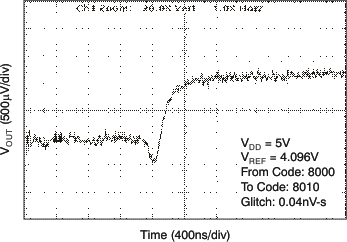 Figure 19. Glitch Impulse: 5 V, 16-LSB Step, Rising Edge
Figure 19. Glitch Impulse: 5 V, 16-LSB Step, Rising Edge
 Figure 21. Glitch Impulse: 5 V, 256-LSB Step, Rising Edge
Figure 21. Glitch Impulse: 5 V, 256-LSB Step, Rising Edge
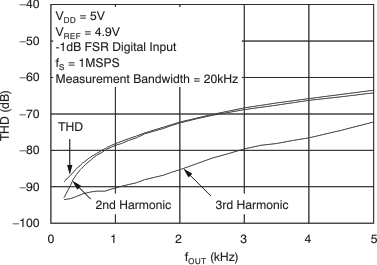 Figure 23. Total Harmonic Distortion vs Output Frequency
Figure 23. Total Harmonic Distortion vs Output Frequency
 Figure 25. Power Spectral Density
Figure 25. Power Spectral Density
